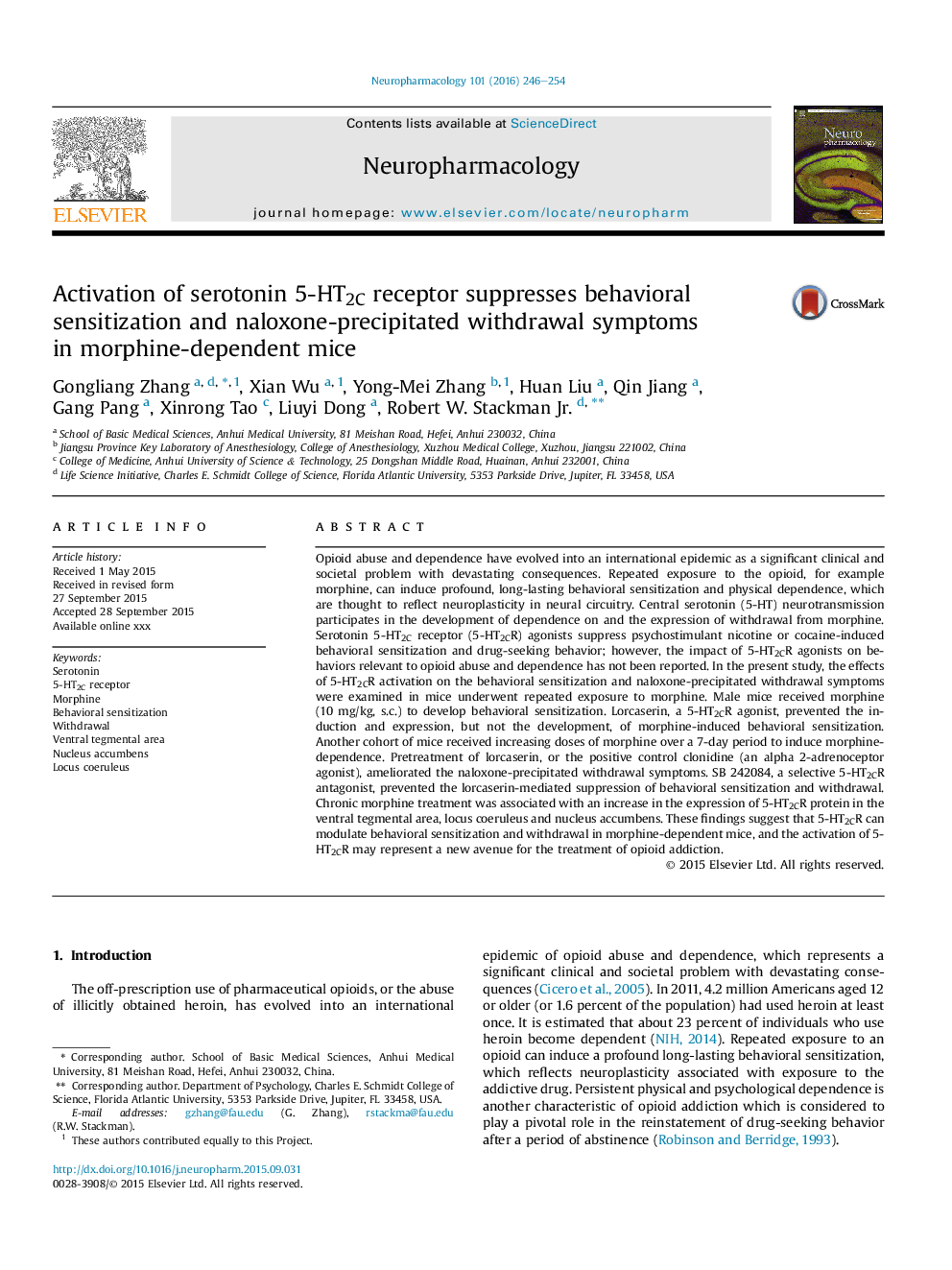| کد مقاله | کد نشریه | سال انتشار | مقاله انگلیسی | نسخه تمام متن |
|---|---|---|---|---|
| 2493116 | 1556614 | 2016 | 9 صفحه PDF | دانلود رایگان |

• Activation of 5-HT2CR suppresses the induction and expression of behavioral sensitization induced by morphine.
• Activation of 5-HT2CR ameliorates naloxone-precipitated withdrawal symptoms in morphine-dependent mice.
• Chronic morphine exposure increases 5-HT2CR expression in ventral tegmental area, locus coeruleus and nucleus accumbens.
• 5-HT2CR may be a drug target for preventing the abuse and dependence of opioid.
Opioid abuse and dependence have evolved into an international epidemic as a significant clinical and societal problem with devastating consequences. Repeated exposure to the opioid, for example morphine, can induce profound, long-lasting behavioral sensitization and physical dependence, which are thought to reflect neuroplasticity in neural circuitry. Central serotonin (5-HT) neurotransmission participates in the development of dependence on and the expression of withdrawal from morphine. Serotonin 5-HT2C receptor (5-HT2CR) agonists suppress psychostimulant nicotine or cocaine-induced behavioral sensitization and drug-seeking behavior; however, the impact of 5-HT2CR agonists on behaviors relevant to opioid abuse and dependence has not been reported. In the present study, the effects of 5-HT2CR activation on the behavioral sensitization and naloxone-precipitated withdrawal symptoms were examined in mice underwent repeated exposure to morphine. Male mice received morphine (10 mg/kg, s.c.) to develop behavioral sensitization. Lorcaserin, a 5-HT2CR agonist, prevented the induction and expression, but not the development, of morphine-induced behavioral sensitization. Another cohort of mice received increasing doses of morphine over a 7-day period to induce morphine-dependence. Pretreatment of lorcaserin, or the positive control clonidine (an alpha 2-adrenoceptor agonist), ameliorated the naloxone-precipitated withdrawal symptoms. SB 242084, a selective 5-HT2CR antagonist, prevented the lorcaserin-mediated suppression of behavioral sensitization and withdrawal. Chronic morphine treatment was associated with an increase in the expression of 5-HT2CR protein in the ventral tegmental area, locus coeruleus and nucleus accumbens. These findings suggest that 5-HT2CR can modulate behavioral sensitization and withdrawal in morphine-dependent mice, and the activation of 5-HT2CR may represent a new avenue for the treatment of opioid addiction.
Journal: Neuropharmacology - Volume 101, February 2016, Pages 246–254